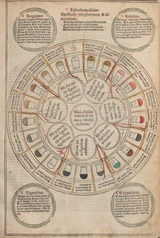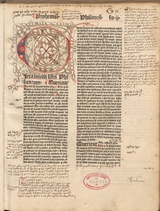Incunabula
Browse this collection
This collection includes over 160 items from the Library's world-renowned collection of more than 580 incunabula on subjects relating to science and medicine, from printed classical works of Galen and Hippocrates to materials on the plague and other "pestilences." Incunabula (from the Latin for "cradle") are books and other materials produced with movable type on a printing press between the mid-1450s through the end of 1500 — the infancy of the age of printing. This digital collection will grow over time as more incunabula titles are scanned.
Highlights include:
- • Complete copies of four incunable editions of Johannes de Ketham’s Fasciculus Medicinae, the first printed medical work to include illustrations;
- • Herbarius latinus (1485) and Ortus sanitatis (1491), two popular and treasured herbals, each with hand-colored illustrations of medicinal plants;
- • a hand-colored copy of Astrolabium planu[m] in tabulis ascendens by Johannes Angelus (1488), with over 400 woodcut illustrations and 80 miniatures depicting the influence of the 12 signs of the zodiac on everyday life;
- • The Nuremberg Chronicle (1493), the largest incunable in the collection measuring nearly 20 inches in height. Illustrators include the noted Renaissance artists Albrecht Dürer and Michael Wolgemut.



